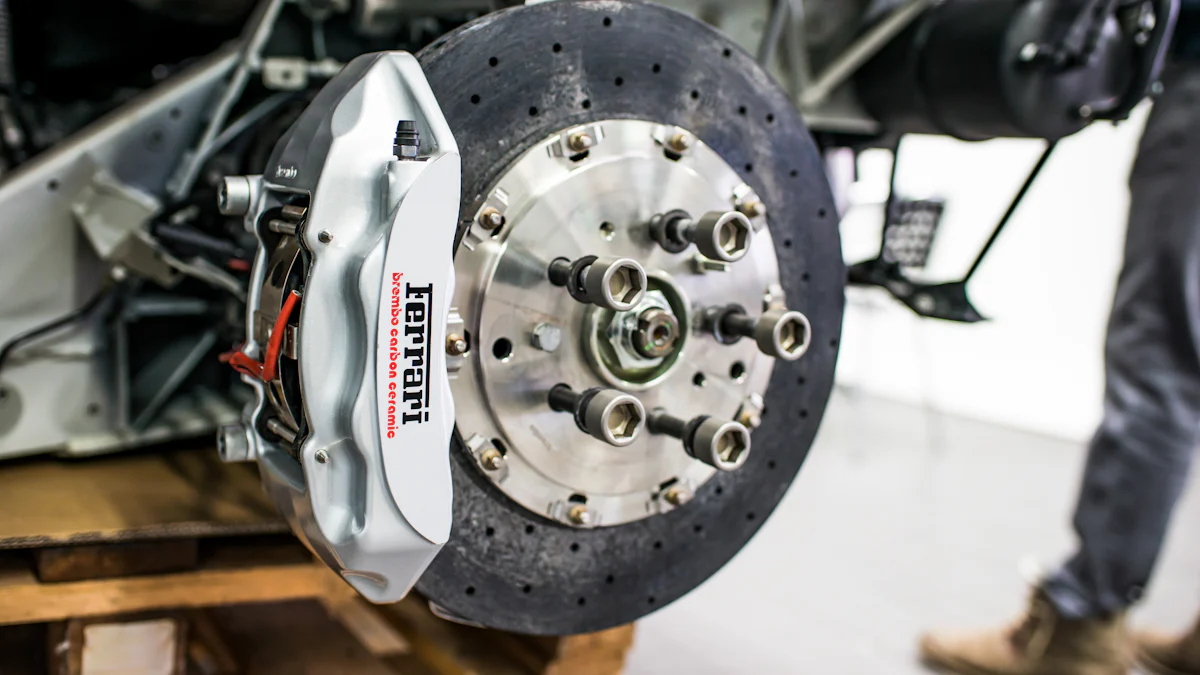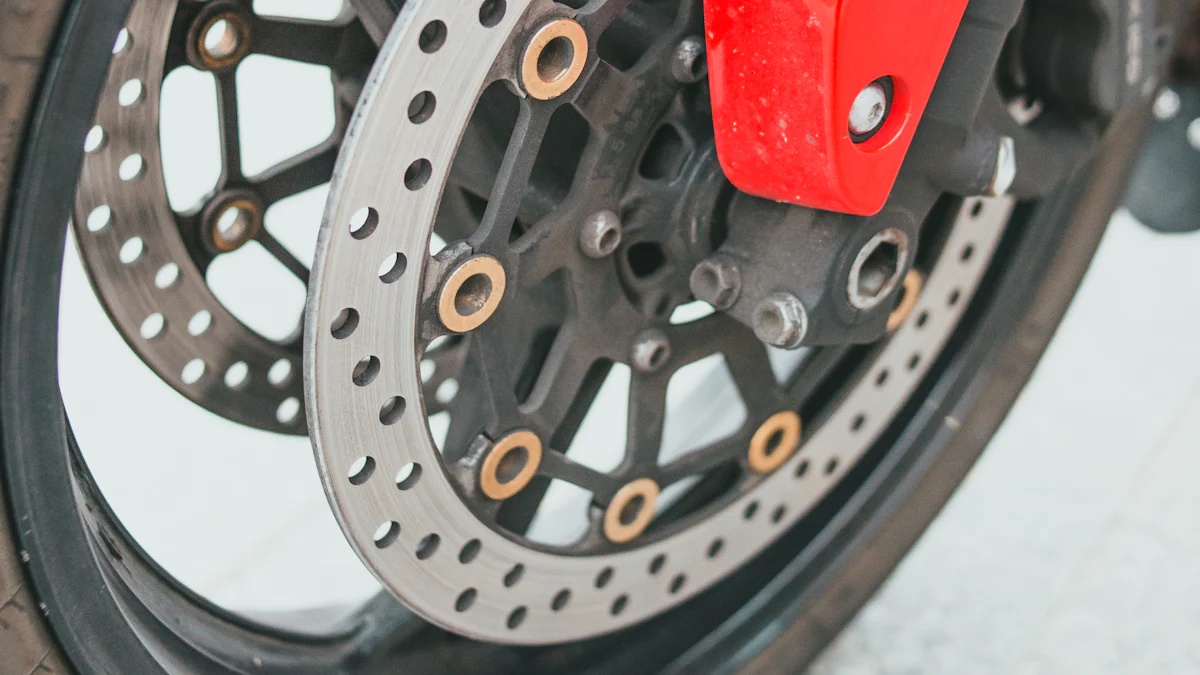
News

Built-in braking units enhance the advantages of VFDs by improving braking power and saving energy. These units facilitate smooth motor control and minimize energy waste during deceleration. Additionally, they contribute to longer system lifespans by reducing wear on components. VFDs equipped with braking units are more cost-effective to operate and function with greater efficiency.
Key Takeaways
Built-in braking units enhance VFD performance by managing excess energy during motor deceleration, preventing overheating and potential damage.
These units improve energy efficiency by converting excess energy into heat or reusing it, leading to lower operational costs and reduced energy waste.
VFDs with built-in braking units extend the lifespan of motors and components by minimizing wear and tear, resulting in fewer repairs and increased reliability.
Understanding VFDs and Built-in Braking Units

What are Built-in Braking Units?
Built-in braking units are important parts of VFDs. They control energy made when a motor slows down. When slowing, the motor creates extra voltage like a generator. Without braking units, this extra energy can harm the VFD or cause problems. Braking units safely release this energy, keeping the system working well.
These units are usually in small, general-use VFDs. They are different from external braking units used for bigger or special jobs. Both types use a braking resistor to handle energy. Built-in units are smaller and fit inside the VFD. This makes them great for places needing simple and space-saving designs.
How Built-in Braking Units Work with VFDs
Using a VFD with a built-in braking unit helps with slowing down. When the motor slows, it sends energy back to the VFD. The braking unit finds this energy and sends it to a resistor. The resistor turns the energy into heat, stopping the VFD from overloading.
This process keeps the VFD safe and improves braking. It allows smoother and quicker slowing, which is needed for exact motor control. Built-in braking units also lower the chance of system problems, making the system more reliable.
Advantages of VFDs with Built-in Braking Units
Better Energy Use
VFDs with built-in braking units save energy. They handle extra energy made when motors slow down. This energy is turned into heat or reused. This stops energy from being wasted and keeps the system running well. By using energy wisely, you use less power and save money. These units are great for jobs needing energy-saving solutions.
Stronger Braking and Performance
Built-in braking units make motor braking better. They control energy made when slowing down. If voltage gets too high, the unit turns it into heat. This improves braking power, helping motors stop fast and accurately. Systems with frequent starts and stops work smoother. It also protects the VFD from damage, keeping it reliable.
Less Motor Damage
VFDs with built-in braking units protect motors from wear. They stop sudden starts and stops, lowering stress on parts. This helps motors and equipment last longer. It also cuts down on repair costs.
Small Size and Cost Savings
Built-in braking units are small and save space. Unlike external systems, they fit inside the VFD. This means fewer parts, easier setup, and lower costs. You get a powerful system without needing extra room. Their small size is perfect for tight spaces like HVAC systems or small factories.
Practical Uses of VFDs with Built-in Braking Units
Factories and Machines
VFDs with built-in brakes are common in factories. They handle heavy machines like elevators and cranes. When these machines slow down, they create extra energy. Without control, this energy can harm the VFD or cause issues. The brake unit safely removes this energy, helping the machine stop smoothly. This makes the system work better and protects the equipment. It also allows precise control, which is important for factory tasks needing accuracy.
Green Energy Systems
Green energy systems use VFDs with built-in brakes a lot. Wind turbines and solar systems often make extra energy. The brake unit manages this energy by turning it into heat or reusing it. This stops the system from overloading and keeps it working well. By saving energy, these units help make green systems last longer. They improve how the system works and protect its parts from damage.
Heating, Cooling, and Pumps
In heating, cooling, and pump systems, these VFDs are very helpful. They control extra energy when slowing down, keeping parts safe. These units also stop small errors, making the system more reliable. The brake unit handles voltage made by motors acting like generators. This protects the VFD and keeps it running smoothly. With these features, you save energy and spend less on repairs. These systems are great for small spaces needing efficient designs.
Picking the Best VFD with Built-in Braking Units
Important Things to Think About
Choosing the right VFD with a braking unit is key. It helps your system work safely and efficiently. Here are some important things to check:
Braking units manage extra energy when motors slow down. They stop voltage spikes in the VFD’s DC circuit. This keeps the system running smoothly. By checking these factors, you can pick the right unit. This avoids damage and keeps everything working well.
Mistakes to Watch Out For
When picking a VFD with a braking unit, avoid common errors. One mistake is thinking all brands use the same wiring setup. This can cause wrong connections and damage. Always check the maker’s guide for wiring details.
Another mistake is ignoring the pre-charge circuit. If DC terminals are past this circuit, extra loads can skip protection. This might break the system. To prevent this, read the specs and instructions carefully. These steps help your VFD stay safe and work properly.
VFDs with built-in brakes have many advantages:
They control extra voltage, stopping overheating and harm.
They help motors last longer by lowering electrical strain.
They make systems more reliable by managing heavy loads.
These benefits boost performance and save energy. Use these units to improve systems and cut costs.
FAQ
What do braking units do in VFDs?
Braking units control extra energy when motors slow down. They stop voltage surges, protect the VFD, and help motors run smoothly for better performance.
Can built-in braking units work for fast systems?
Yes, they are great for fast systems. They allow safe, quick motor slowing without harming the drives.
How do VFDs with braking units save energy?
These VFDs turn extra energy into heat or reuse it. This cuts energy waste, uses less power, and makes the system work better.
Please give us a message